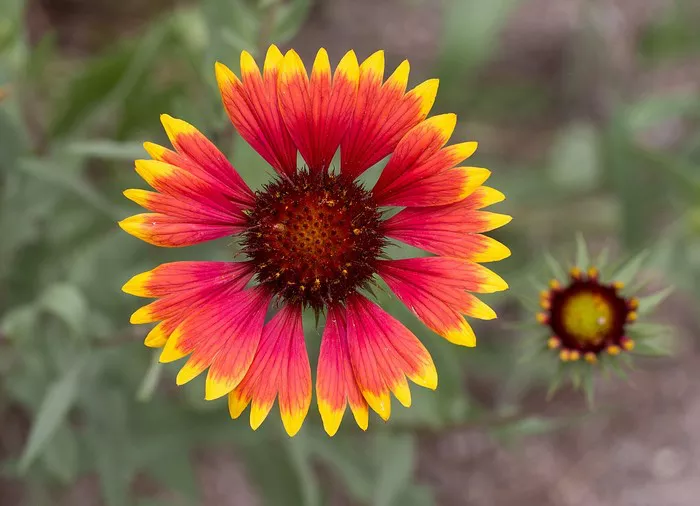Blanket flowers, scientifically known as Gaillardia, are vibrant and resilient perennial plants native to North and South America. With their striking red and yellow blossoms, they add a burst of color to any garden or landscape. Gardeners and enthusiasts often wonder about the lifespan of these beautiful plants. In this comprehensive guide, we delve into the longevity of blanket flowers, exploring factors that influence their lifespan, tips for extending their life, and common misconceptions.
Understanding Blanket Flowers
Before delving into their lifespan, it’s essential to understand the characteristics of blanket flowers. These plants belong to the Asteraceae family and are renowned for their daisy-like flowers with rich hues of red, orange, and yellow. Blanket flowers typically bloom from late spring to early fall, attracting pollinators like bees and butterflies to the garden.
Factors Influencing Lifespan
Several factors influence the lifespan of blanket flowers, including environmental conditions, soil quality, and care practices. Here are some key considerations:
1. Climate: Blanket flowers thrive in regions with plenty of sunlight and well-drained soil. They are tolerant of drought conditions, making them suitable for xeriscaping projects. However, extreme cold temperatures can damage the plants, affecting their longevity.
2. Soil Quality: Good soil drainage is crucial for the health and longevity of blanket flowers. They prefer sandy or loamy soil with a slightly acidic to neutral pH. Poorly drained soil can lead to root rot and other diseases, reducing the lifespan of the plants.
3. Watering: While blanket flowers are drought-tolerant once established, they benefit from regular watering during dry spells, especially in hot climates. However, overwatering can be detrimental, causing root rot and fungal diseases.
4. Pruning: Deadheading spent flowers encourages continuous blooming and prolongs the lifespan of blanket flowers. Regular pruning also helps maintain the plant’s shape and prevents it from becoming leggy.
5. Pests and Diseases: Keep an eye out for common pests like aphids and spider mites, as well as diseases such as powdery mildew and rust. Early detection and appropriate treatment can prevent damage and extend the lifespan of blanket flowers.
Average Lifespan of Blanket Flowers
Under optimal conditions, blanket flowers can live for several years, often reaching their peak performance in the second or third year after planting. However, their exact lifespan can vary depending on the factors mentioned above. On average, these perennials can survive for three to five years, but with proper care and maintenance, they can persist for much longer.
Tips for Extending Lifespan
To maximize the lifespan of your blanket flowers, consider the following tips:
1. Site Selection: Choose a sunny location with well-drained soil for planting blanket flowers. Avoid areas prone to waterlogging or excessive shade, as these conditions can shorten the plant’s lifespan.
2. Soil Preparation: Amend the soil with organic matter, such as compost or aged manure, to improve drainage and fertility. This creates an ideal growing environment for blanket flowers and enhances their longevity.
3. Mulching: Apply a layer of organic mulch, such as shredded bark or straw, around the base of the plants to conserve moisture, suppress weeds, and regulate soil temperature. Mulching also helps protect the roots from temperature extremes, promoting healthy growth and longevity.
4. Regular Maintenance: Deadhead spent flowers regularly to stimulate new growth and prolong the blooming period. Remove any damaged or diseased foliage promptly to prevent the spread of infections and maintain the plant’s overall health.
5. Dividing and Propagation: Over time, blanket flowers may become overcrowded, leading to reduced vigor and bloom production. Divide the plants every few years to rejuvenate them and promote longevity. Additionally, propagate new plants from divisions or seeds to ensure a continuous supply of blanket flowers in your garden.
Common Misconceptions
Despite their resilience and longevity, blanket flowers are sometimes subject to misconceptions. Let’s debunk a few myths:
1. Annuals vs. Perennials: While blanket flowers are often treated as annuals due to their prolific blooming in the first year, they are technically short-lived perennials. With proper care, they can return year after year, providing reliable color and beauty to the garden.
2. Invasiveness: Some gardeners worry that blanket flowers may become invasive due to their vigorous growth habit. While they can self-seed under favorable conditions, they are not considered invasive in most regions. Deadheading spent flowers and dividing overcrowded clumps can help control their spread.
3. Limited Lifespan: Contrary to popular belief, blanket flowers are not short-lived plants. With the right conditions and care, they can persist for several years, delighting gardeners with their cheerful blooms and enduring beauty.
Conclusion
Blanket flowers are prized for their long-lasting blooms, vibrant colors, and resilience in the garden. While their exact lifespan may vary depending on environmental factors and care practices, these perennials can thrive for several years with proper attention. By understanding the factors that influence their longevity and following the tips outlined in this guide, you can enjoy the beauty of blanket flowers in your garden for years to come.


